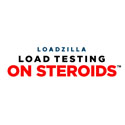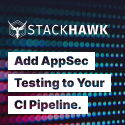This paper is a great overview of different lightweight web servers. A lot of websites use lightweight web servers to serve images and static content. YouTube is one example: http://highscalability.com/youtube-architecture.
So if you need to improve performance consider changing over a different web server for some types of content.
Overview:
Recent years have enjoyed a florescence of interesting implementations of Web servers, including lighttpd, litespeed, and mongrel, among others. These Web servers boast different combinations of performance, ease of administration, portability, security, and related values. The following engineering study surveys the field of lightweight Web servers to help you find one likely to meet the technical requirements of your next project.
"Lightweight" Web servers like lighttpd, litespeed, and mongrel can offer dramatic benefits for your projects. This article surveys the possibilities and shows how they apply to you.
Important dimensions for evaluation of a Web server include:
* Performance: How fast does it respond to requests?
* Scalability: Does the server continue to behave reliably when many users simultaneously access it?
* Security: Does the server do only the operations it should? What support does it offer for authenticating users and encrypting its traffic? Does its use make nearby applications or hosts more vulnerable?
* Availability: What are the failure modes and incidences of the server?
* Compliance to standards: Does the server respect the pertinent RFCs?
* Flexibility: Can the server be tuned to accommodate heavy request loads, or computationally demanding dynamic pages, or expensive authentication, or ...?
* Platform requirements: On what range of platforms is the server available? Does it have specific hardware needs?
* Manageability: Is the server easy to set up and maintain? Is it compatible with organizational standards for logging, auditing, costing, and so on?
Click to read more ...
 Wednesday, October 3, 2007 at 1:50AM
Wednesday, October 3, 2007 at 1:50AM 













